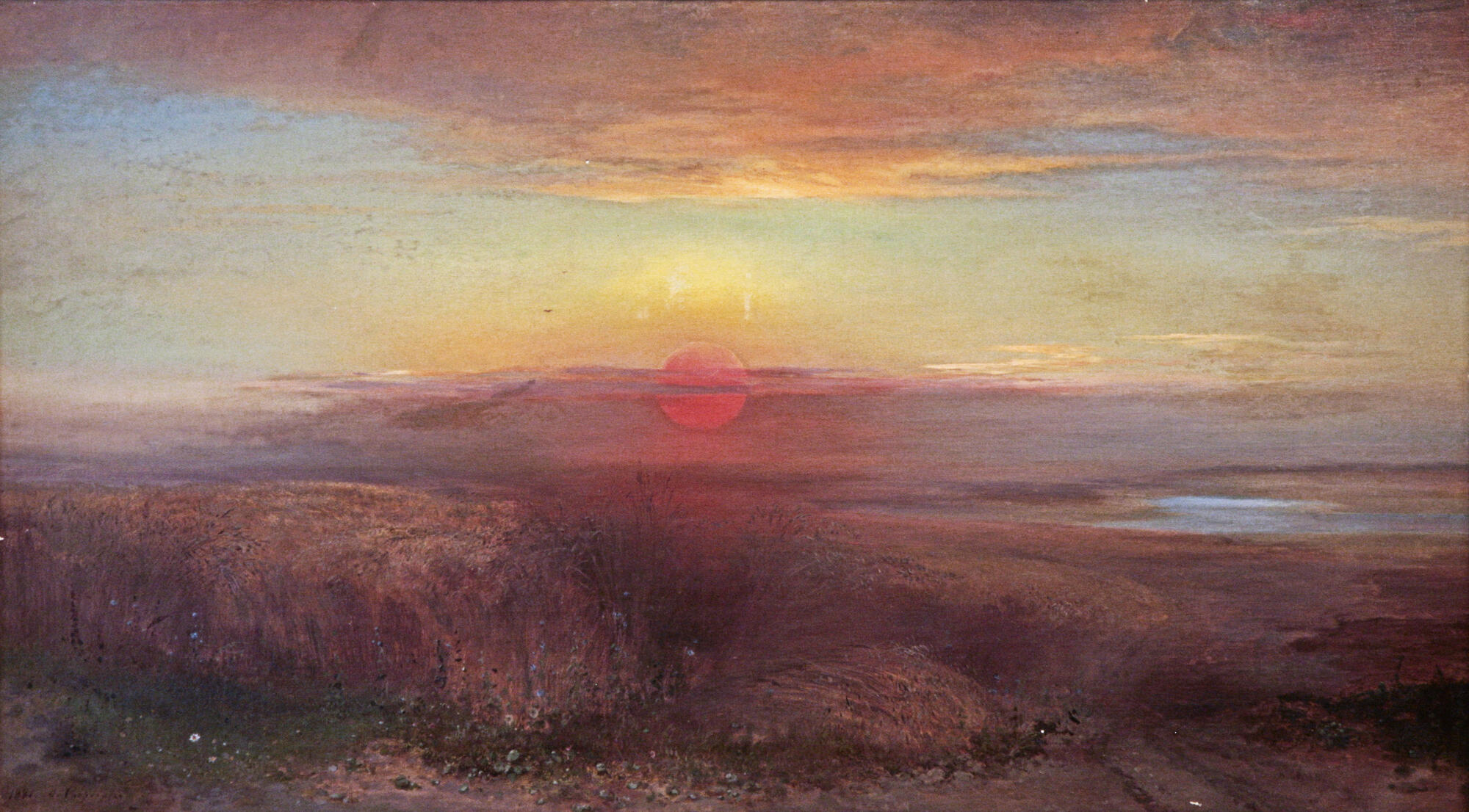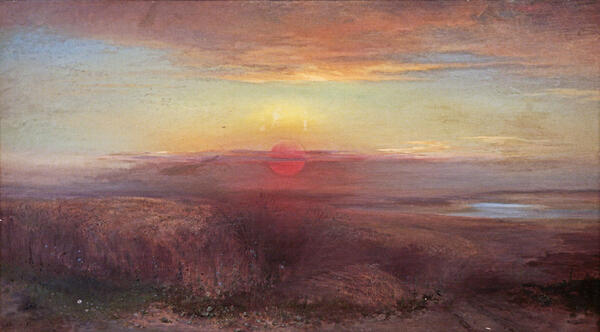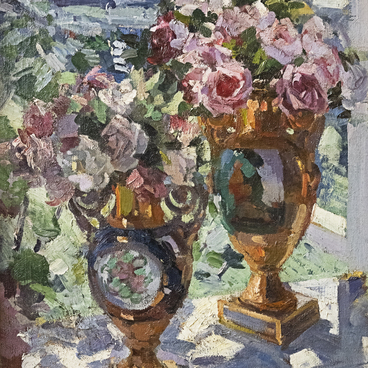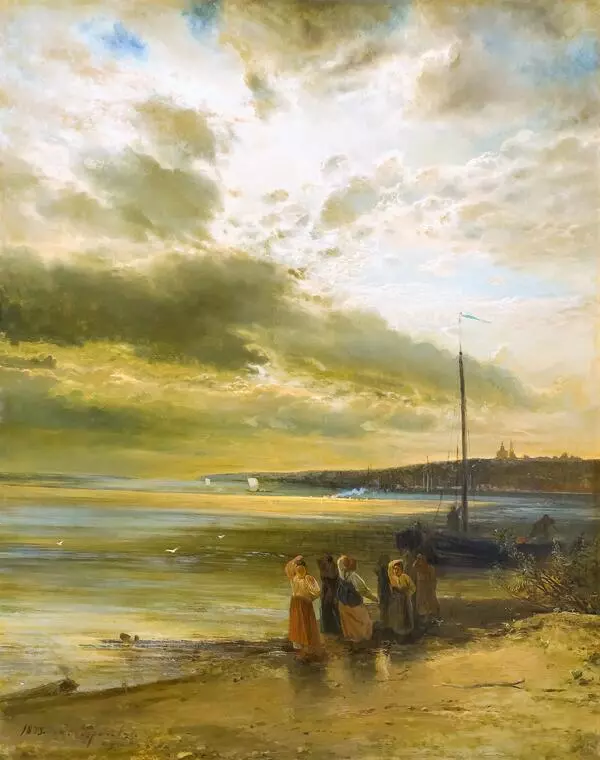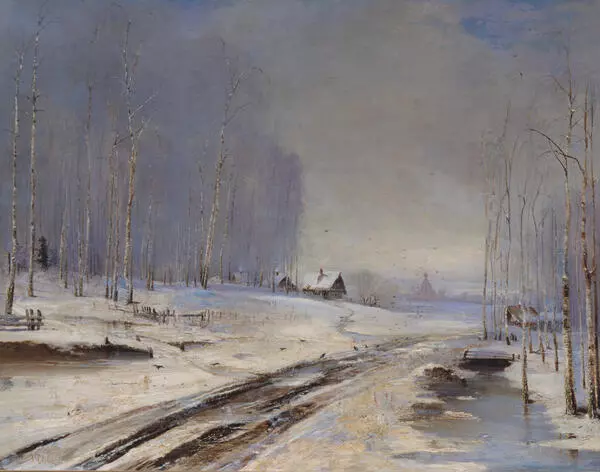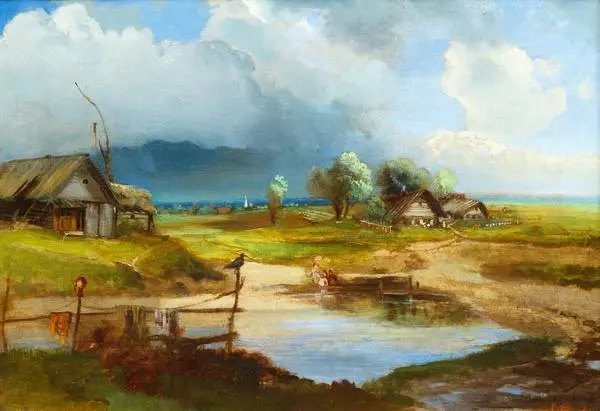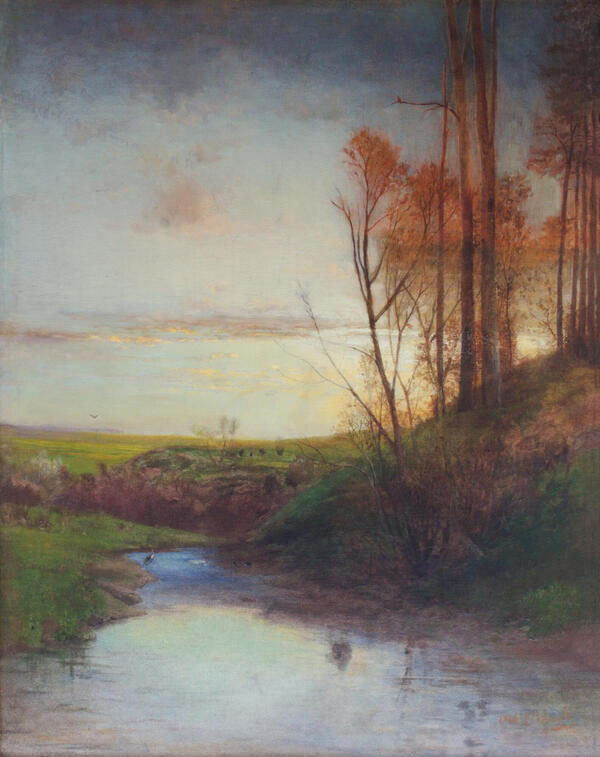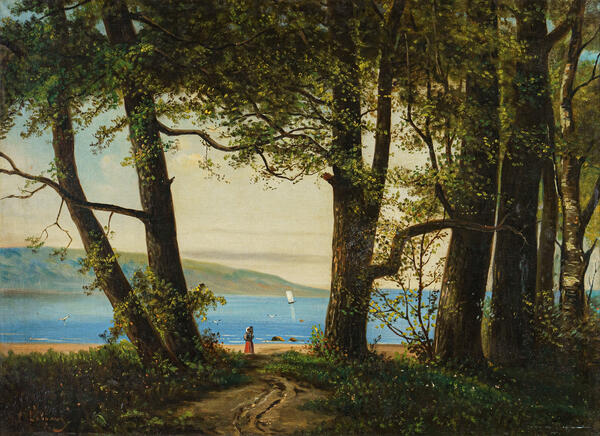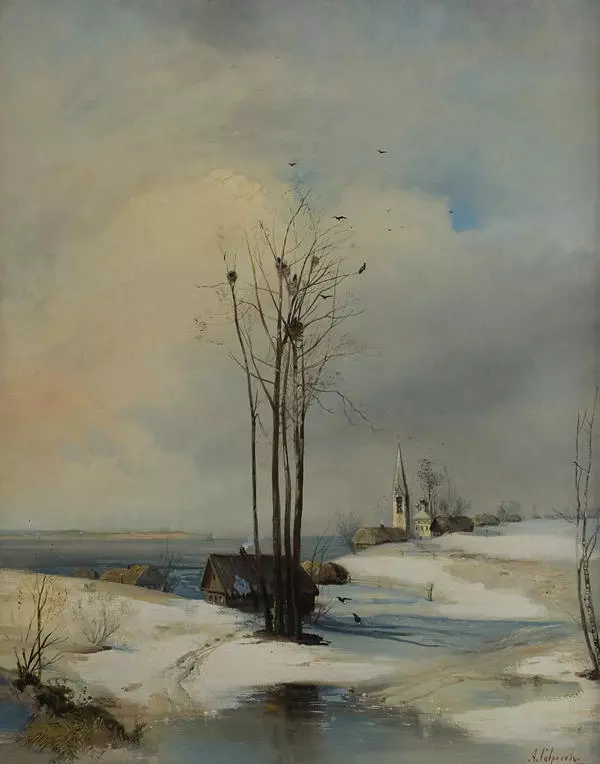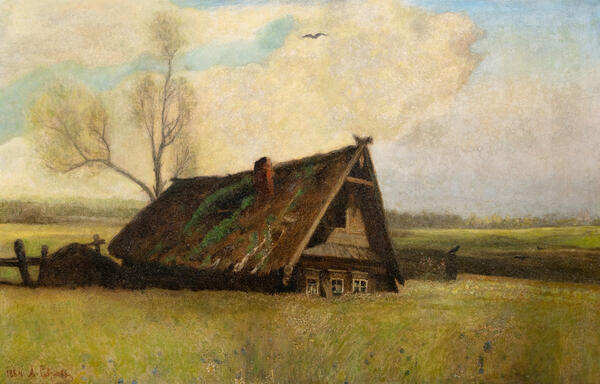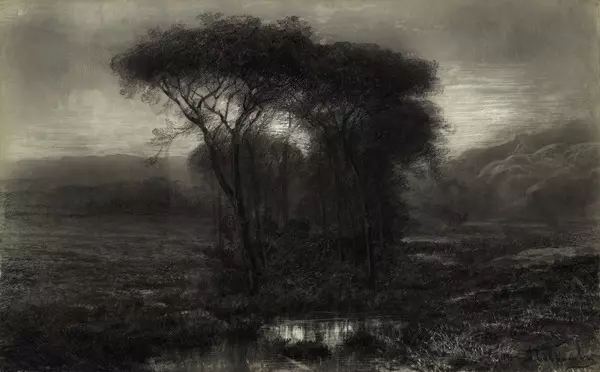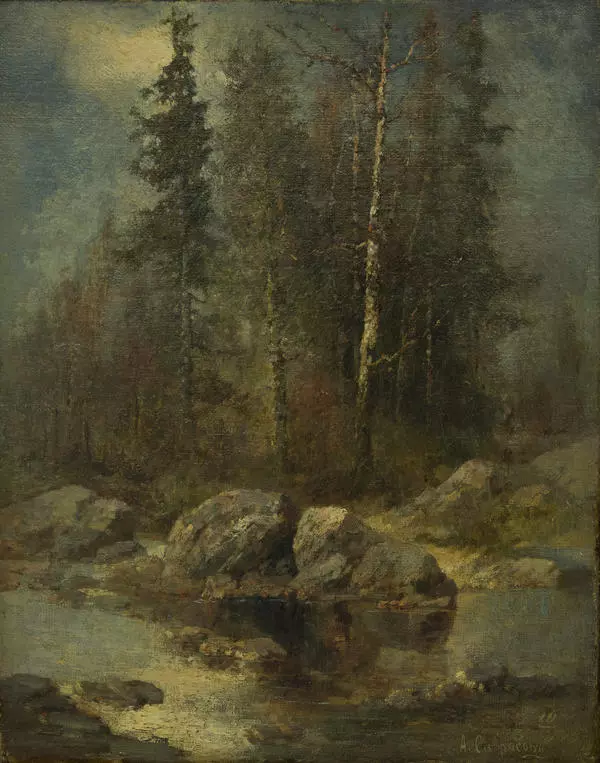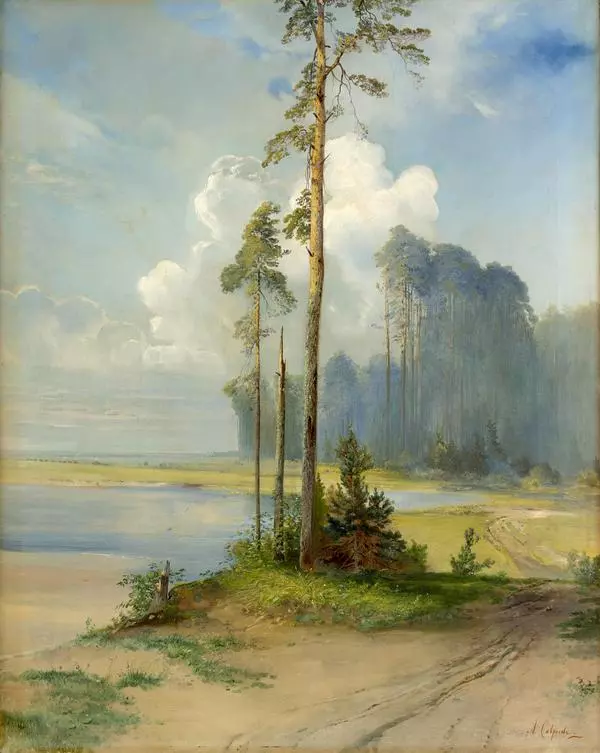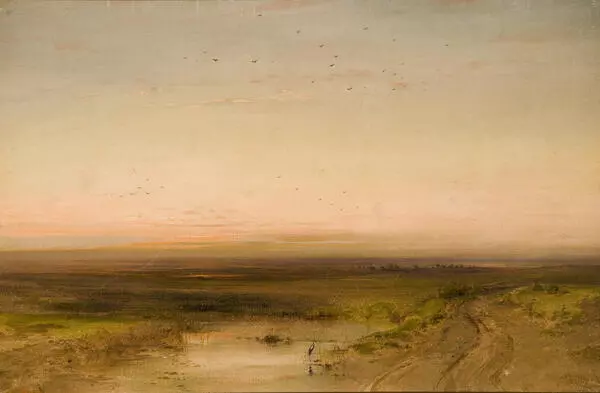The landscape painter Alexey Savrasov, who belonged to the Wanderers — a group of Russian Realist artists, was born into a merchant family in 1830. Savrasov went against his father’s wishes and did not follow in his footsteps — in 1844, he entered the Moscow School of Painting, Sculpture and Architecture.
The artist became famous for painting “View of the Kremlin from the Krymsky Bridge in Inclement Weather” in 1851. In 1852, Savrasov went on a trip to the southern provinces of Russia. During this trip he became interested in the Russian landscape, which later became the main genre of his work.
“Rye” is one of Savrasov’s later works. He painted it in 1881. The painting depicts an endless field after a severe thunderstorm. The tempest has already passed, but we can feel the tension remaining in nature: the red sun sets behind the horizon, the sky is covered with thick clouds, their shadow is cast upon the earth. The golden-bronze shades, which Savrasov used to depict the rye, create a sense of fine movement. Due to the smooth transitions of the color, it seems that the field merges with the blue swamp in the depths of the pictorial space.
Savrasov paid special attention to the perspective of the painting: the low waves of the rye field do not distract attention from the background. Despite its relatively small size, the landscape fully conveys the scale and solemnity of the Russian terrain.
In 1881, Savrasov also created one more painting under the same name. This version is housed in the State Tretyakov Gallery. Despite sharing the same pictorial motif, the mood of the paintings differs enormously. The canvas from the Tretyakov Gallery features the beginning of a terrible thunderstorm, while the painting from the Rostov Museum portrays its finale.
The image of a ripe field was a popular theme among the Russian landscape painters of the 19th century. Savrasov started painting similar motifs in 1880, when he created a drawing to illustrate Alexey Koltsov’s poem called “Harvest”.
Nature remained the main theme of Savrasov’s work throughout the artist’s life. He was looking for new principles of composition in romantic landscape painting, experimented a lot with color in order to be able to convey different emotions.
In his works, the artist sought to depict nature in a certain mood and add some lyricism — he called that “the soul of the landscape”.
The artist became famous for painting “View of the Kremlin from the Krymsky Bridge in Inclement Weather” in 1851. In 1852, Savrasov went on a trip to the southern provinces of Russia. During this trip he became interested in the Russian landscape, which later became the main genre of his work.
“Rye” is one of Savrasov’s later works. He painted it in 1881. The painting depicts an endless field after a severe thunderstorm. The tempest has already passed, but we can feel the tension remaining in nature: the red sun sets behind the horizon, the sky is covered with thick clouds, their shadow is cast upon the earth. The golden-bronze shades, which Savrasov used to depict the rye, create a sense of fine movement. Due to the smooth transitions of the color, it seems that the field merges with the blue swamp in the depths of the pictorial space.
Savrasov paid special attention to the perspective of the painting: the low waves of the rye field do not distract attention from the background. Despite its relatively small size, the landscape fully conveys the scale and solemnity of the Russian terrain.
In 1881, Savrasov also created one more painting under the same name. This version is housed in the State Tretyakov Gallery. Despite sharing the same pictorial motif, the mood of the paintings differs enormously. The canvas from the Tretyakov Gallery features the beginning of a terrible thunderstorm, while the painting from the Rostov Museum portrays its finale.
The image of a ripe field was a popular theme among the Russian landscape painters of the 19th century. Savrasov started painting similar motifs in 1880, when he created a drawing to illustrate Alexey Koltsov’s poem called “Harvest”.
Nature remained the main theme of Savrasov’s work throughout the artist’s life. He was looking for new principles of composition in romantic landscape painting, experimented a lot with color in order to be able to convey different emotions.
In his works, the artist sought to depict nature in a certain mood and add some lyricism — he called that “the soul of the landscape”.
